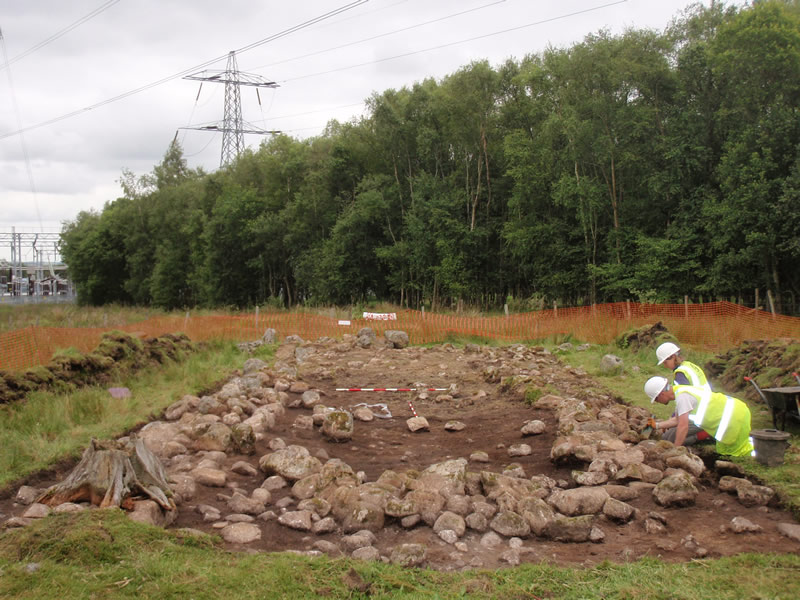A recent excavation by GUARD Archaeology, which was carried out as a condition of planning permission for the development of a new electricity substation near Kintore in Aberdeenshire, has uncovered medieval archaeological remains of national significance.
The GUARD Archaeology team, led by Maureen Kilpatrick, discovered a 14th/15th century rural farmstead. The dwelling is a longhouse and was probably divided between space for animals at the east end and the inhabitants at the west, with an entrance facing south onto an area of rig and furrow cultivation. The associated yard to the north has evidence of sub-division within it suggesting that it may also have been used for a combination of animal rearing and cultivation. Finds include green glazed red ware recovered from the floor surface, which indicates when the building was occupied.
What makes this building significant is that there are no comparable structures of this date known in lowland Aberdeenshire. It is also a rare survival for the Scottish lowlands, where such buildings have long since been ploughed away or built over. The medieval farmstead discovered at Kintore may well provide evidence that will improve our understanding of medieval rural life in Scotland.
GUARD Archaeology has conducted the work in collaboration with Amey for SSE. A programme of post-excavation analyses will follow and may reveal even more fascinating insights into the ordinary lives of people in Scotland during the Middle Ages.

